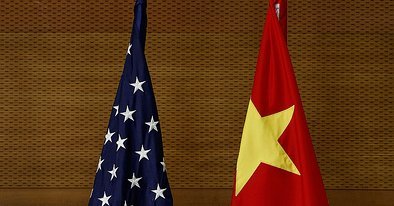A feeling of ’common ground’ dominated the visit President Obama paid to Japan, Singapore, China and South Korea. The politics of pressure and economic leveraging once again gave way to a slower strategy based on establishing connections of mutual respect.
The nations visited by the President are indicative of what the US views as the region’s rising strengths. Each country may not be specifically called an ally; each one has its own concerns and demands which Washington must listen to and understand in order to negotiate and work with. Yet each of them present significant political opportunities in foreign policy: working closely with one or more of these countries will provide America a solid operational base from which to tackle issues such as the threat of a nuclear North Korea and Iran. If one focuses on what transpired in Japan and China specifically, it seems clear, now more than ever, that the Obama administration’s diplomatic strategy is in for the long haul, rather than aiming for short term results.
Expectations were high regarding this trip: results were expected to be gained within days, nothing less than immediate political concessions from the Asian countries were expected. Obama’s approach has been vilified time and time again in the mainstream US media outlets as the wrong way to go about forging diplomatic ties with the region. James Fallows of The Atlantic rightly comments that US politicians were reacting to a portrayal of Obama’s trip to Asia ’that turned out largely to be a myth.’ Indeed, in order to analyse the effects of such a strategy one must take in careful considerations factors such as Obama’s own expected aims of the visit, cultural differences, and the political context into which Obama’s entourage headed.
The Obama administration’s diplomatic strategy is in for the long haul, rather than aiming for short term results.
In truth, gestures such as bowing to an older person, which Obama did in front of Japan’s emperor, is constructed in culturally opposed ways. While Americans viewed such a gesture indicates weakness and a willingness to give in to demands, in Japan Obama’s deep bow was understood to be a sign of respect to the nation. This, in turn, has political implications: it means that the U.S President is willing to accept that the role of the US in the world is shifting, and that a country such as Japan deserves to be treated seriously as an equal partner. Japan, on the other hand, continues complicating US military operation by refusing to operate refueling centres in its territorial waters. It is not a foregone conclusion, however that Japan’s brusque measure is measured as an exploitation of any perceived American weakness. Rather, it could be an internal political effort by the government to appease its citizens by trying to define its relationship with powers such as the US, China or NATO on its own terms.
In China the US needed to tackle a multitude of difficult topics ranging from Iran to Tibet’s Dalai Lama to censorship of the internet. China is viewed by economic analysts to be the world’s current emerging power and typically disagrees with the US on sensitive topics such as freedom of information and human rights. Such issues, however, remained under wraps for most of Obama’s stay. Publicly, at least, most of the discussion centered around the upcoming Copenhagen climate talks, with both powers seemingly waiting for each other to announce emission targets in C02 emission reductions. A multitude of other topics seem to have been deliberately avoided or at least, their discussion underplayed.
The effects of the administration’s chosen strategy may take years to present themselves. It is quite premature to deem the tour itself a failure, however. If anything, it seems that Obama has managed to make a very important first step in committing important developing economies to a working partnership with the US. China, at least, seems to have been engaged on all issues which the United States are concerned with. The challenge, moving forward, is to keep such relationships open to development while maintaining America’s current allies appeased. Nothing is clear or certain of what will emerge from the visit down the line, but it is clear that a two sided conversation has now been opened. The stage has been set; the first act will play itself out in a few days time, in Copenhagen.

Follow the comments: |
|
